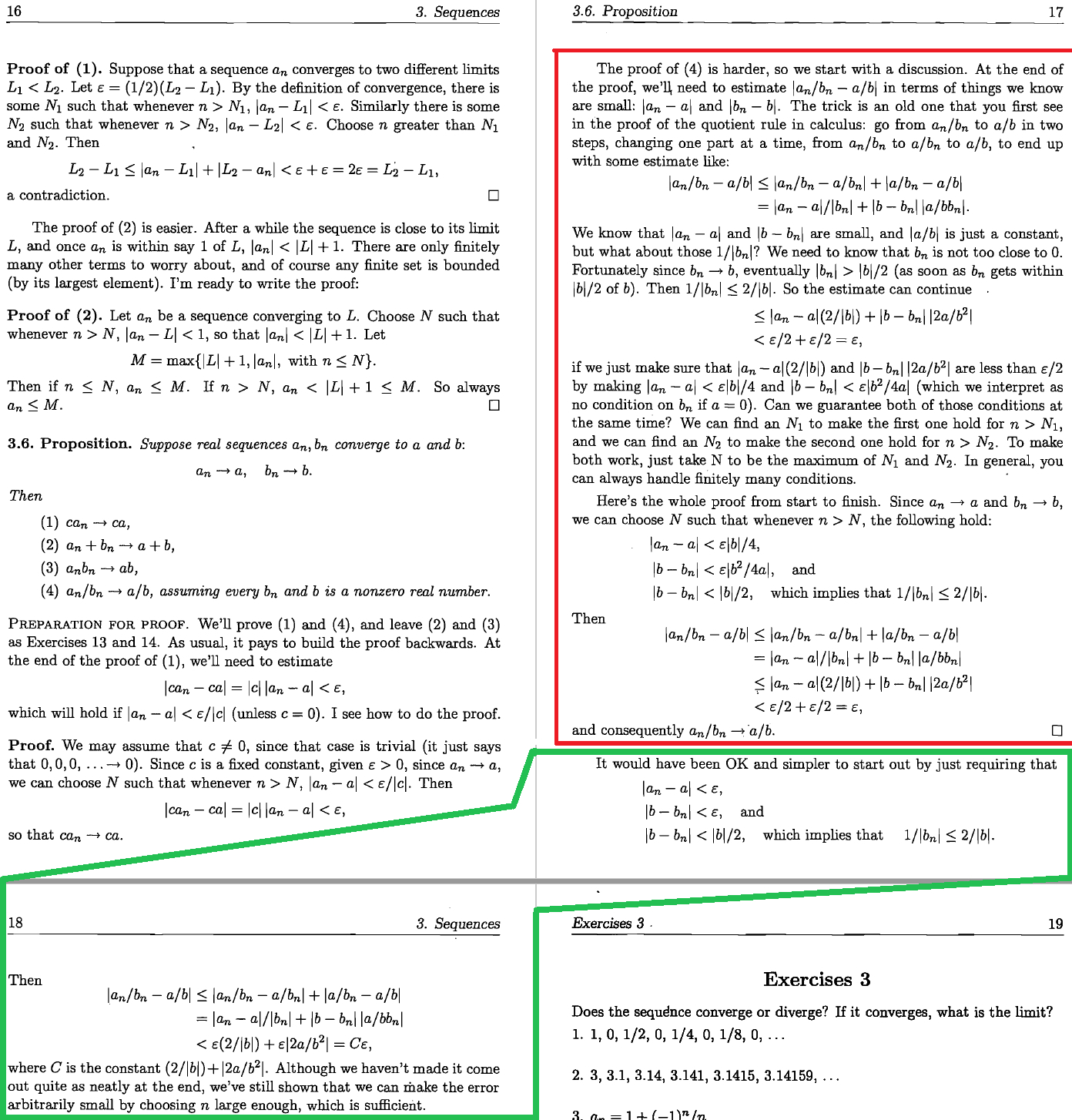1. Most textbooks conclude $\delta-\epsilon$ proofs tidily with $\epsilon > 0$ alone, as in red beneath. But what's the official term for this alternative $\delta-\epsilon$ proof, as in green beneath?
2. I forgot the particulars of another textbook that I read, not the one quoted below. It advises concluding $\delta-\epsilon$ proofs with a littered, garnished $\epsilon$ as in red below, because it's quicker to define a new $\epsilon_2 := \text{ convoluted } \epsilon_1$ at the end (rather than working backwards to deduce byzantine, unkempt $\delta$'s). Please recommend such textbooks?

Frank Morgan, *Real Analysis* (2005), pages 17-8.


















